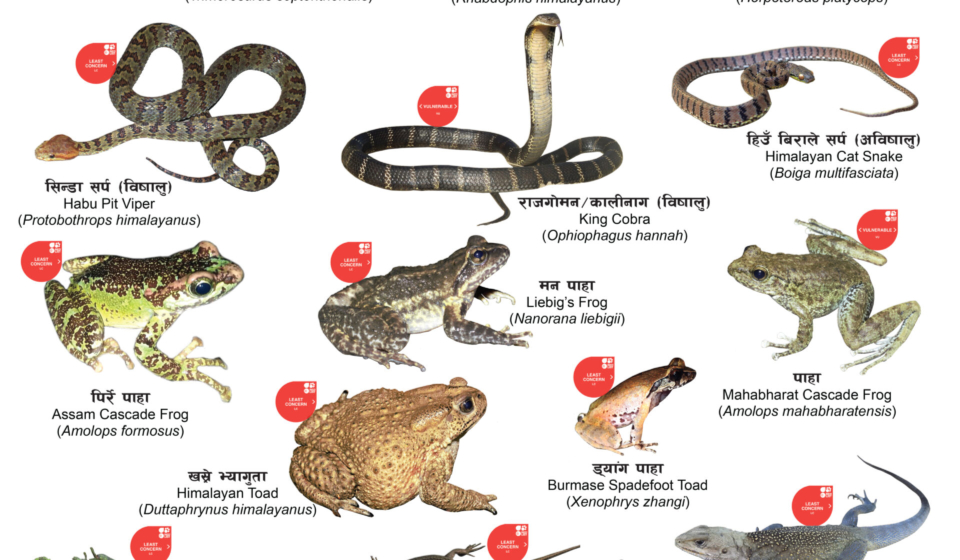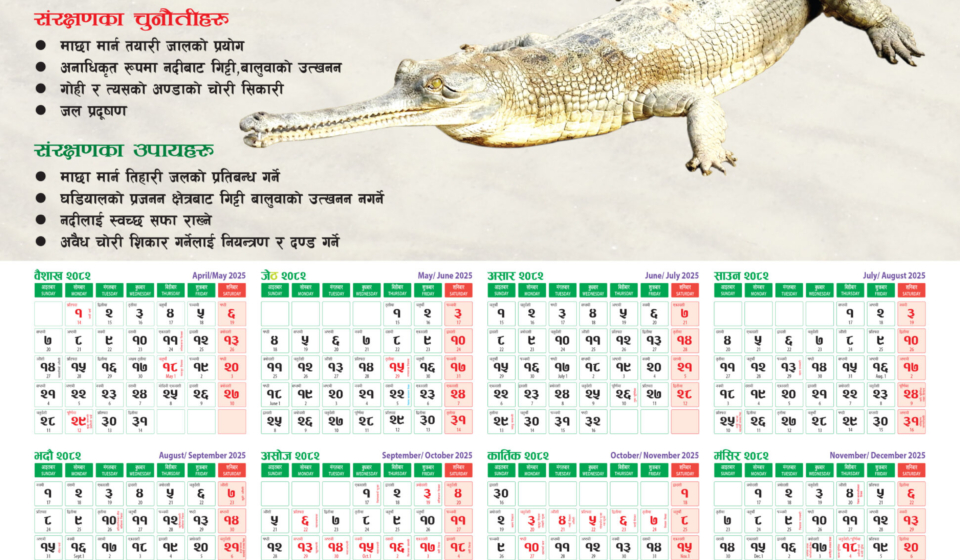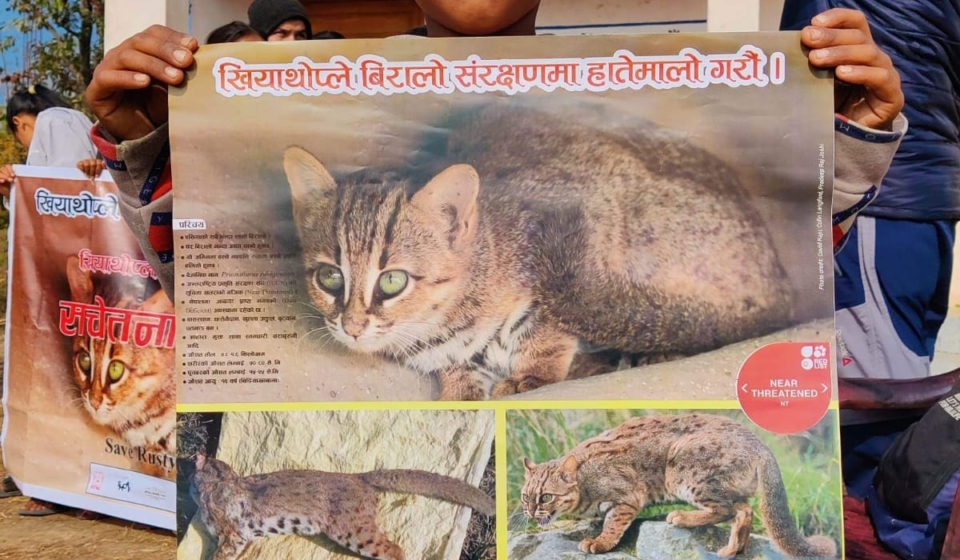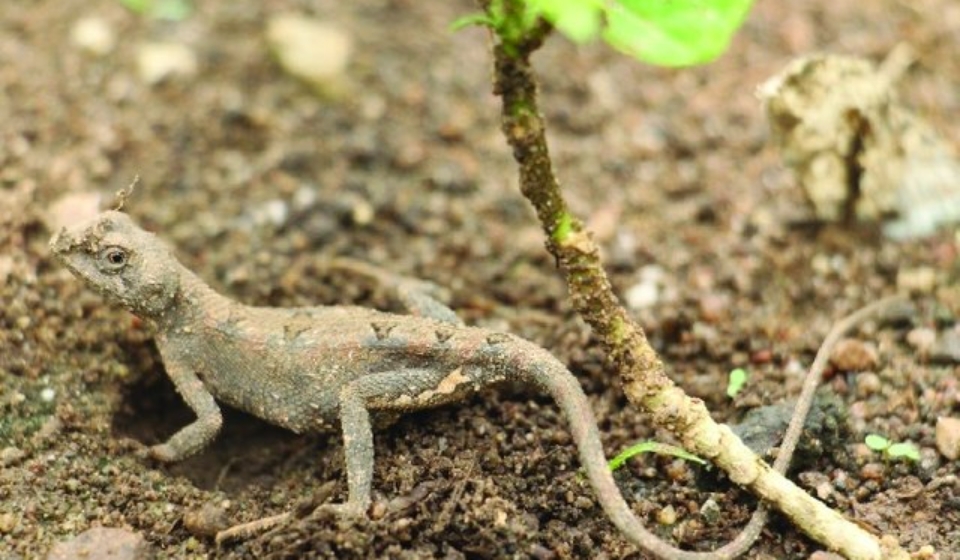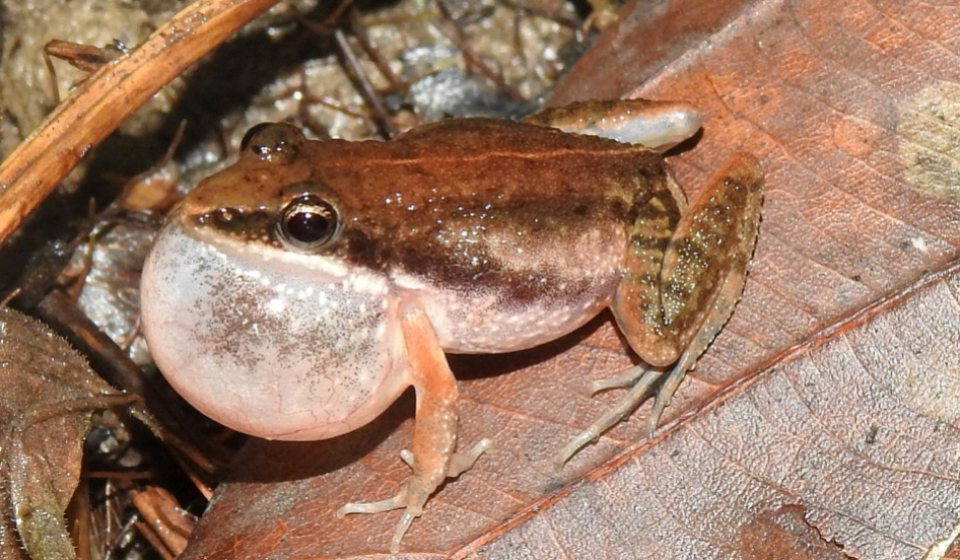An elusive lizard thought to live only in India makes an appearance in Nepal
Published on Mongabay
Leopard occupancy correlates with tiger and prey occurrences in the Parsa-Koshi Complex, Nepal
Authors: H. B. Katuwal, B. P. Bhattarai, S. Regmi, S. Bhandari, A. K. Ram, B. Aryal, K. Tamang, S. Kc, A. Nepali, D. Adhikari, S. Koirala, B. D. Baral, S. Devkota, R. Gautam, D. N. Mandal, J. L. Belant, H. P. Sharma, R.-C. Quan
Abstract: Large carnivores such as leopards (Panthera pardus) experience continuing threats from habitat loss and fragmentation, depletion of prey populations, and retaliatory killing following conflicts with humans. We aimed to identify factors affecting leopard occupancy and temporal overlap between leopards and tigers (P. tigris), their major prey, and human activities in the Parsa-Koshi Complex (PKC), Nepal. We deployed 154 cameras for 21 days each along wildlife trails throughout PKC during December 2022–March 2023. We found low leopard occupancy (0.17 ± 0.04) in PKC, with greater occupancy rates within protected areas, particularly in Parsa National Park and its buffer zone. Human (63.10 ± 23) and livestock (36.46 ± 102) detections were higher across the PKC. Leopard occupancy was positively associated with the presence of tigers and prey. Temporal overlap was moderately high between leopards and tigers, as well as between leopards and their prey. Our research suggests that coexistence between leopards and tigers is likely largely facilitated by higher prey availability, which may reduce competition. Further, we demonstrate that maintaining forest cohesion can improve habitat for leopards. Intensifying use of agricultural areas could reduce forest fragmentation and increase leopard habitat overall, in turn reducing leopard depredation of livestock and improving leopard-human co-existence and conservation.
DOI: https://doi.org/10.1111/jzo.13251
Journal: Journal of Zoology
Paper link: https://zslpublications.onlinelibrary.wiley.com/doi/10.1111/jzo.13251
Dipendra Adhikari Memorial Conservation Grant Result Announcement
With Reference to notice announced on 11 November, 2024 for the student research proposal for “Dipendra Adhikari Memorial Conservation Grant” announced by Nepal Conservation and Research Center; this is to notify that the following candidate has been selected for the grant:
| S.N. | Name of the candidate | Affiliation | Research Topic | Level |
| 1. | Ritika Pathak | Golden Gate International College, Kathmandu | Habitat Selection and Diet Composition of Striped Hyaena in Deukhuri Valley, Dang, Nepal | M.Sc. |
| Candidate in waiting | ||||
| Roshani Acharya | Degree Campus, Department of Zoology. Biratnagar | Studies on proximate composition of some small indigenous fish species of Singhiya and Keshaliya Rivers of Morang district, Nepal | M.Sc. | |
The above successful candidate is requested to contact Nepal Conservation and Research Center (at ncrc.research@gmail.com) within 15 January 2025. If the successful candidate is not able to contact, then the candidate in waiting list will be awarded.

Declaration: This memorial grant was possible from generous support of Dipendra’s friends and conservationists from Nepal and abroad. NCRC would like acknowledge all the supporters to make this happen.
Species composition and habitat associations of birds around Jhilmila Lake at Western Chure Landscape, Nepal
Authors: Dipendra Adhikari, Jagan Nath Adhikari, Janak Raj Khatiwada, Bishnu Prasad Bhattarai, Subarna Ghimire and Deepak Rijal
Abstract: Wetlands support around 27% of birds in Nepal, however, there is a paucity of information about bird diversity and the wetland habitat of Western Chure Landscape Nepal. The “point count” method along transects was carried out to evaluate the species composition and habitat associations of birds. A total of 2,532 individuals representing 152 species (winter: N = 140 and summer: N = 91) from 19 orders and 51 families were reported from Jhilmila Lake and its surrounding area. The number of birds was reported to be significantly higher during winter than in the summer season. The species diversity was also higher in winter (Shannon’s index (H) = 4.38, Fisher’s alpha = 30.67) than in summer (H = 4.21, Fisher’s alpha = 34.69) as this area is surrounded by old-growth forest that provides available habitats for forest, grassland- and wetland-dwelling birds. This lake is an example of a wetland present in the Chure area that plays an important role in the conservation of biodiversity along with birds. Hence, we recommend its detailed study in terms of biodiversity and water quality.
Journal: Ornis Hungarica
Doi: https://doi.org/10.2478/orhu-2023-0002
Paper link: pdf
Effects of invasive alien plants and habitat structure on bird assemblages in a unique lowland forest in eastern Nepal
Authors: Binod Bhattarai, Dipendra Adhikari, Jagan Nath Adhikari,
and Bishnu Prasad Bhattarai
Abstract: Invasive alien species play a major role in biodiversity decline. We studied the impacts of invasive alien plant species (IAPS) on bird assemblages and their habitats in Jalthal Forest, a biogeographically unique lowland remnant forest in eastern Nepal. We surveyed birds by point counts and quantified environmental variables at 89 sites. Observations of 1,373 individuals of 86 species showed that species richness was the highest in wooded grasslands and floodplains and lowest in sal forests invaded by IAPS, whereas abundance was highest in IAPS invaded forests. Abundance and richness decreased with increasing cover of IAPS, shrub cover and distance to water. The abundance and richness of every feeding guild except omnivores were negatively correlated with IAPS cover. Our results increase our understanding of the impacts of IAPS on birds and clearly indicate the need of controlling IAPS in Jalthal Forest, and thus, are valuable for forest management and biodiversity conservation.
Journal: ORNIS HUNGARICA
Paper link: https://sciendo.com/article/10.2478/orhu-2024-0019
First record of the spotted pond turtle Geoclemys hamiltonii in Shuklaphanta National Park, Nepal

Authors: Kavi Raj Bohara, Yam Bahadur Rawat, Santosh Bhattarai
Eleven species of turtles of the family Geomydidae are
known from Nepal, including the spotted pond turtle Geoclemys hamiltonii,
which also occurs in Bangladesh, India and Pakistan,
and is categorized as Endangered on the IUCN Red List.
In the most recent list of the herpetofauna of Shuklaphanta
National Park in Sudoorpaschim Province, four species of
Geomydidae were documented, not including the spotted
pond turtle. The spotted pond turtle is heavily traded, and
illegal trafficking is the greatest threat to its existence. The
seizure of more than 10,000 illegally traded individuals.
Link: https://www.cambridge.org/core/journals/oryx/article/first-record-of-the-spotted-pond-turtle-geoclemys-hamiltonii-in-shuklaphanta-national-park-nepal/C46433D52CC7874D12323392989CCD26
DOI: https://doi.org/10.1017/S0030605324000590
Download pdf:
Dipendra Adhikari Memorial Conservation Grant Notice
Application Deadline: 01 December 2024

With support from Dipendra’s friends and conservationists in Nepal to honor his legacy, we have established the Dipendra Adhikari Memorial Conservation Grant. This initiative aims to continue his conservation efforts by providing support to students for their project work/thesis/dissertation dedicated to exploring and safeguarding biodiversity of Nepal. The grant seeks to fund student research, initiatives, and practical conservation projects that align with Dipendra’s vision.
Eligibility
- The grant is open to individuals who are currently pursuing M.Sc. in Forestry, Environment Science, Zoology, Wildlife and allied natural resources conservation.
- The grant is available to Nepalese citizens only.
- The grantee should have his/her substantial fieldwork in Nepal.
Scope and Priorities
- Studies involving threatened and data deficient species will be given preference.
- Studies in biodiversity research in Hyaena or small mammals will be prioritized.
- Studies in Terai and Siwaliks will be prioritized.
Grant Criteria
- Alignment with Scope and Goals: Proposals should align within the scope of the grant and a broader goals of biodiversity conservation in Nepal
- Innovation: Projects that demonstrate innovative approaches to wildlife conservation will be favored.
- Feasibility: Applicants should present a clear and feasible plan, outlining the project’s objectives, methods, and expected outcomes.
- Impact: Emphasis will be placed on projects with tangible and sustainable impacts on the targeted species or ecosystems.
Grant Amount
NRs. 50,000 (Fifty thousand Nepalese rupees); tax will be deducted as per government rules.
Grant deadline: 01 December 2024
Requirements
- A project proposal (including background, significance of the project, objectives, methods, budget, timeline of activities)
- A reference/support letter from supervisor
- A CV of the student
Where to submit?
Email: ncrc.research@gmail.com
Nepal Conservation and Research Center


